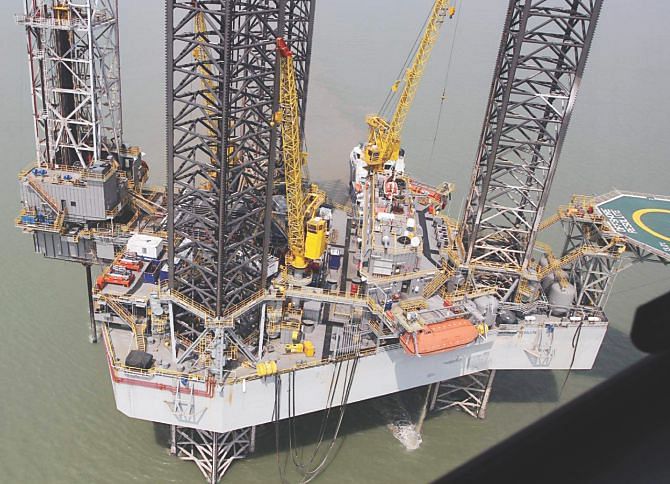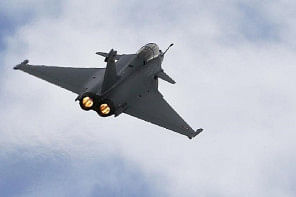Deepwater exploration in the Bay of Bengal

MUCH has been made of the difficulties of leasing out offshore gas blocks due to maritime boundary disputes. Now that the boundaries are delineated, and the blocks are fully defined, can the people responsible for our gas resources do what needs to be done? From past records, one cannot feel very hopeful. Maritime boundary dispute with Myanmar was resolved more than 2 years ago -- allowing 18 blocks to be explored -- but very little in terms of exploration activity has been initiated.
The attempt to exploit our deep offshore oil and gas resources was made very recently. In 2008, the caretaker government took the first initiative. Despite the fact that the boundaries on both sides were disputed, they had the courage and vision to draw up 28 blocks and invite bids for the deep offshore blocks. However imperfect the entire process may have been, they received bids from reputable companies. Unfortunately, due to lack of political mandate at that time, the blocks could not be awarded for exploration.
When the government came to power in 2009 they had everything ready to start deepwater exploration, but could not get their act together for quite some time. Eventually however, they did use the already completed biding and awarded Conoco Phillips 2 blocks, even though they had won 4 blocks. This whimsical decision displeased Conoco Phillips, who pointed out that exploring only two blocks substantially increased their financial risks. The obligations included 2-D seismic and at least 1 well in a three year period. Seismic operation was completed but no data were released, and the 1-well drilling operation was never undertaken. Thus, Conoco Phillips seems to have wriggled out of one of the main obligations, leaving Bangladesh in a “back to square one” status regarding deep offshore prospects. Nearly 7 years have gone by -- 2 years of the caretaker government and 5 years of the previous government -- and we still hear the Petrobangla chairman saying: “We have no idea about resources in the deep offshore blocks.”
One of the main reasons why Conoco Phillips is dilly dallying and Petrobangla is not being able to attract other reputable IOCs is that the PSC does not have enough incentives. First, it has been diluted by the removal of the “export clause,” and second, it is continuing with an artificially low purchase price of gas. Without at least one of the incentives, deepwater exploration simply won't happen. There are several reasons why deep offshore gas exploration and production is expensive: (i) drilling costs are extremely high; (ii) not economical to develop small reserves; (iii) logistical challenge to maintain the platform and get the gas to shore; and (iv) high insurance cost to guard against accidents and other unforeseen events.
The worldwide average cost of drilling a deepwater well is $100 million and can take several months to complete. Drilling rigs can cost as much as $1 million per day. Deepwater developments require large reserves, and the total number of wells needs to be kept small in order to make the project economically viable. The drilling cost component can be more than 50% of the total capital expenditure. Hence, companies always try to ensure a very high gas production rate per well.
Drilling and producing oil and gas from deepwater reservoirs present many technical and logistical challenges, and as a result costs are extremely high. Operating in water depths between 5,000 ft to over 10,000 ft, pressures greater than 10,000 psi, and temperatures close to freezing are some of the major challenges. Below the seabed, oil and gas can be located at depths exceeding 10 kilometers under hard rock, thick salt and tightly packed sand, where temperatures can rise to 150 degrees Celsius and the pressure increases to 20,000 psi.
Even though the environmental hazards from a gas platform or rig blowout are not as great as that from oil, the recent oil rig accident off the coast of Louisiana has changed the risk picture completely for all types of petroleum exploration and production activity. The extremely high compensation that BP had to pay for this disaster automatically led insurance companies to substantially increase the premium for deepwater drilling and operation.
India increased its gas price from $4.2 to $8 per MCF (1000 ft3) last April. This large increase reflects not only the growing cost of importing LNG but also the increasing cost of domestic gas. India's onshore gas reserves are nearing exhaustion and new production is expected to come mainly from deepwater reserves. ONGC's two discoveries in the Mahanadi basin are viable at $11 per MCF, to give a 10% return, said N.K. Verma, Director (Exploration) ONGC. “We will not able to monetise them till we get a higher price,” he added. Private sector company, Reliance Industries, which has been seeking a market-linked price expressed same sort of views.
If $11 is the price needed to produce the gas in India's Mahanadi basin, what then would the price of gas have to be to produce from our deepwater reserves? Can we realistically expect it to be half that? Of course no one can accurately estimate at what price gas or oil can be produced, but it is clear that high price incentives are needed to attract IOCs to the risky business of deepwater gas exploration and production. If the price is too low, IOCs will always find a way not to produce the gas. Petrobangla, therefore, needs to do some serious homework to find out what the cost of production of our deepwater gas will be. If India's gas needs $11, maybe ours will need $8, but surely one cannot expect it to be below $6.
The central question is: Are we serious about deepwater gas exploration? Gearing up gas exploration requires giving politically dangerous lucrative incentives to IOCs, instead it is safer to buy LNG at $15 because people will not make accusations of selling of the country to multinational oil companies.
The writer is Professor, Department of Chemical Engineering, BUET.

 For all latest news, follow The Daily Star's Google News channel.
For all latest news, follow The Daily Star's Google News channel. 



Comments